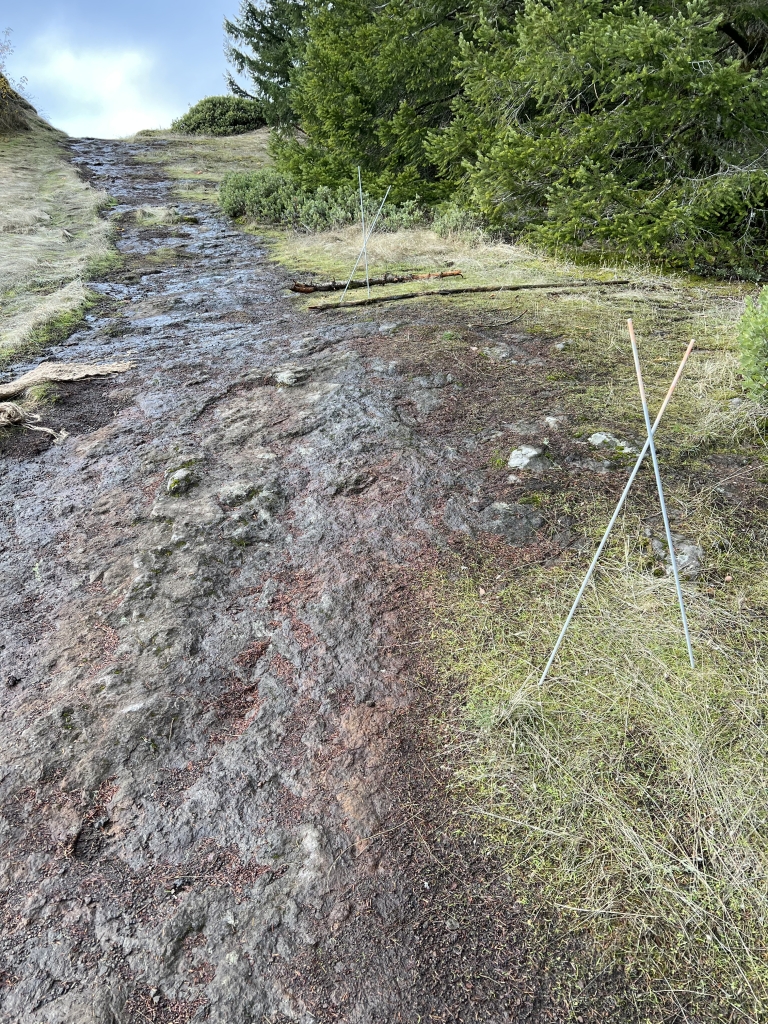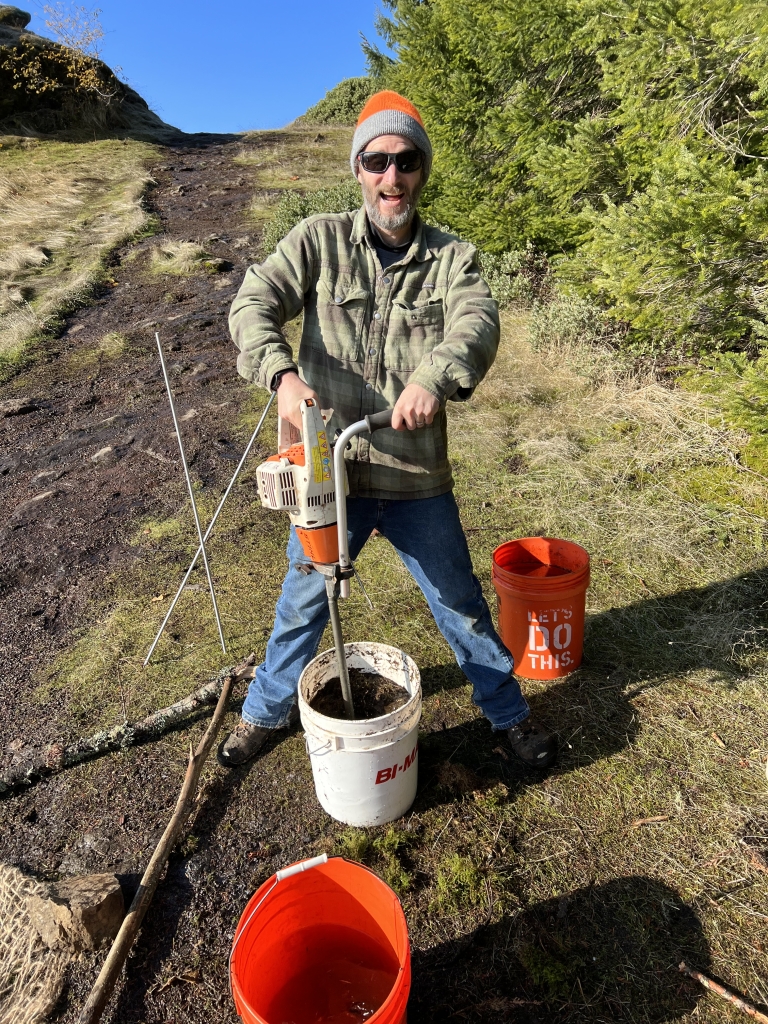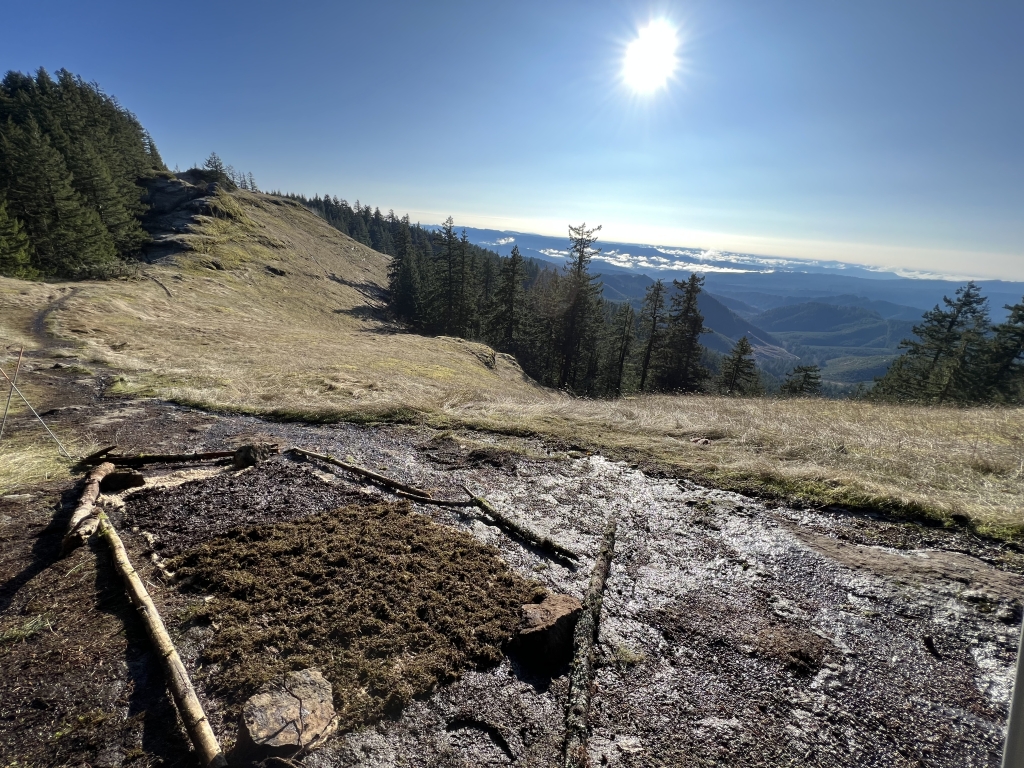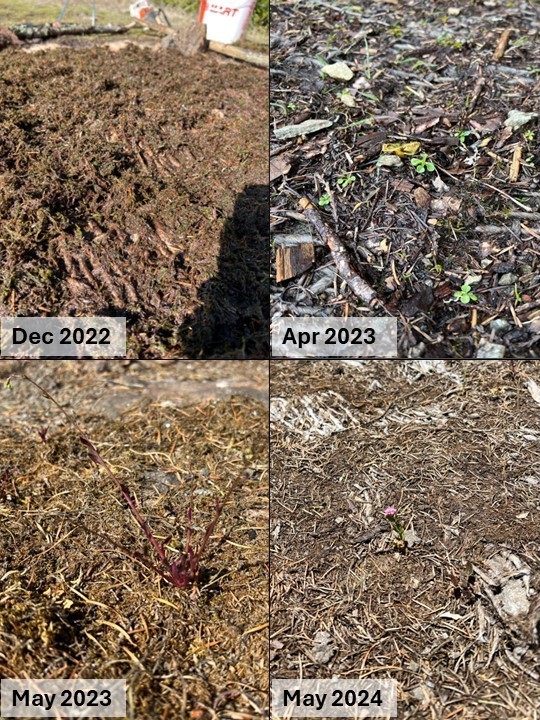By Tyler Roberts, September 2024
Ecological restoration is a powerful tool for breathing new life into degraded ecosystems. By increasing native plant diversity, controlling invasive species, and restoring natural processes, we can restore resilient ecosystems that are able to adapt to changing conditions like climate change. But every site is unique, defined by factors like hydrology, plant community, disturbance regime, topography, climate, and soils. Each project requires a custom approach, often starting with the soil.
But what happens when there’s no soil to work with? This is the challenge I’m currently facing at Horse Rock Ridge, a site owned by the Bureau of Land Management (BLM) and located in the Willamette Valley, OR. Increased visitation and hiking have rapidly degraded the thin soils which barely cover solid rock on this exposed ridge in the Coburg Hills. In winter, the site is saturated and running with water; by summer, it’s dried out to a crisp. As more people discover this stunning location with its unique plant community, the negative impacts of recreation are growing. An increasing number of “social” trails are forming, existing trails are widening, and it doesn’t take much to break up the fragile soil—whether it’s wet and loose or dry and crumbly—leaving bare rock exposed to the elements.

With no soil left, the question becomes: how do we restore such damage? Natural processes could take decades to repair the area, and I’m looking to shorten that timeline. In the winter of 2022, I began experimenting with a technique called hydroseeding. This method, commonly used to reduce erosion alongside roads and on bare slopes, typically involves a large machine and vast amounts of materials and water. You’ve probably seen it at some point–that strange green pulp covering the edges of newly constructed roads. Traditional hydroseeding involves a slurry of water, substrate (often paper mulch), tackifier (glue to hold the mixture together), and the seeds you’re trying to establish.
At Horse Rock Ridge, we had to adapt the hydroseeding method to suit the site’s unique and sensitive nature. We used only plant materials sourced directly from the area and hiked in everything else. Instead of the standard paper mulch, we collected mosses from the surroundings to use as the substrate. The seed mix came from the site itself, and we sourced water from nearby natural pools. For the tackifier, we chose a plant-based organic option that would naturally degrade over time.

Once we had all the ingredients, it was time to create the slurry. Without the option of a large hydroseeding machine, we mixed the ingredients in five-gallon buckets, using a soil auger in reverse to achieve the right consistency–a chunky paste. We then applied the mixture by pouring and spreading it over the exposed rock. In some areas, we laid down jute fabric before applying the slurry to see if it would help retain the substrate over time, while in other places, we applied the slurry directly to the rock. After that, it was a waiting game through the winter to see what would emerge in the spring.

The results so far have been mixed. In the first spring, most seeds germinated and grew well, but an abrupt shift in early-season weather in 2023 quickly dried out the soils and substrate. That summer was challenging for many plants in Oregon, and Horse Rock Ridge was no exception. Despite this, the substrate remained in place throughout the year, and in the spring of 2024, more plants emerged. While there were fewer plants than the previous year, some species not included in the original mix appeared, suggesting that seeds had naturally dispersed and germinated on their own. Though these plants were small and stunted, given the harsh conditions, their presence indicates a promising natural process of early plant succession—exactly what I hope to facilitate in these bare rock areas.

Encouraged by these results, I’m planning adjustments to the process and preparing for a second trial. Developing new methods to speed up the recovery of these degraded systems is a step in the right direction. However, addressing the core issue of how we recreate conscientiously in sensitive areas like Horse Rock Ridge remains crucial. For now, I’m hopeful that I’ll have even more progress to share in a year or two.
An enormous thank you to the Bureau of Land Management (BLM) for their support as our partner and funder for this work and to our AmeriCorps partners for all their labor on this project.

